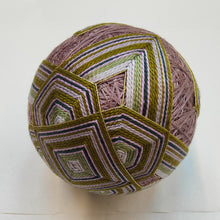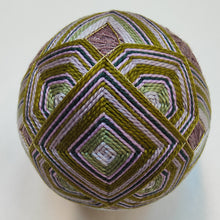
Temari - a Japanesse craft dating back to the Edo Period, symbolising friendship and best wishes - the perfect gift.
Temari balls are a form of folk art that originated in China and were introduced to Japan in the 7th century. Originally, they were made from herbs and leather, and noblewomen of Japan developed theirs from silk and kimono scraps. The temari ball is a symbol that represents great loyalty or a valued friendship.
Traditionally temari balls were gifted to children on New Year’s day to wish for children's happiness. In modern Japan, temari are a symbol of both New Year and young femininity, and are a common motif on both children’s and young women’s kimono. It is also customary to give a temari-patterned kimono to a bride as a good-luck charm, in the hope that she will be able to build a happy family.
The name is believed to have come from kemari, a kick ball, brought over from China in the Yamato period, over 1300 years ago. Unlike the leather kemari, the softer, more feminine temari was originally made from silk scraps and was played with inside like a hacky-sack using one’s hands and elbows. The popularity of temari grew during the Edo period, from the 17th to 19th centuries. The development of cotton thread production in Japan at this time resulted in the we recognise today today. Also named ito-mari (糸鞠, thread balls), these soft balls wrapped in intricate geometric designs of cotton and silk threads lifted the position of temari from a mere toy to a work of art.
Made by hand in Adelaide by Annie Reid









